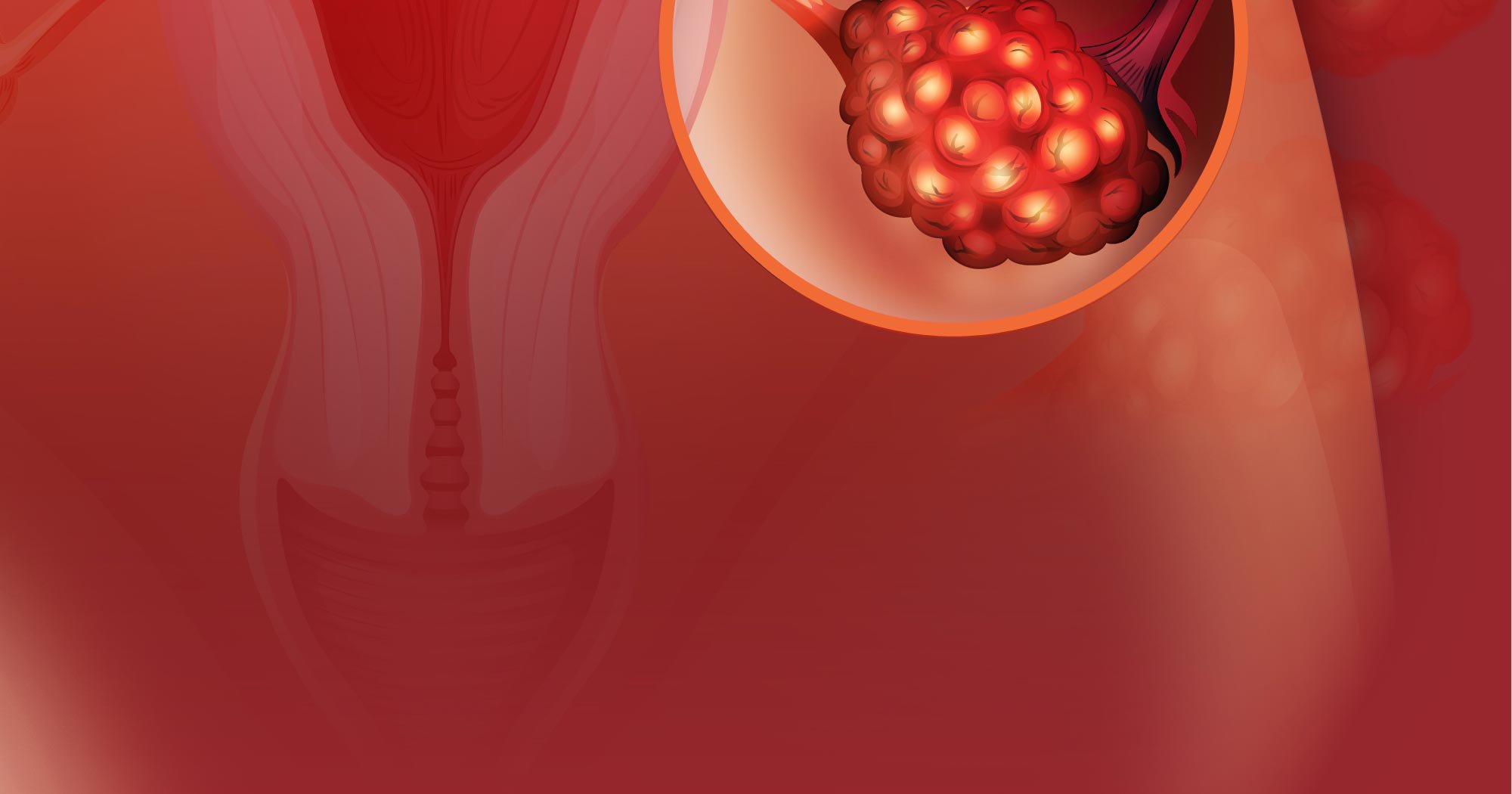Fast Facts
Quick and informative gynecologic cancer facts
- According to the American Cancer Society (ACS), a woman’s risk for getting ovarian cancer during her lifetime is 1 in 87. The chances of a woman dying of ovarian cancer is about 1 in 130, which does not count low malignant potential ovarian tumors.
- Older women are more likely to develop ovarian cancer than younger women; about half of patients are aged at least 63 years when they are diagnosed. However, incidence rates for several types of cancers, including ovarian cancer, have increased for younger generations.
- The 5-year relative survival rate for all types of ovarian cancer is 50.9%. This rate increases significantly to 91.9% if the cancer is detected before spreading outside of the ovary. However, only 19% of all ovarian cancers are found during the early stages of development due to lack of effective screening options.
- It was previously thought that ovarian cancers originated in the ovaries, but recent research indicates that many of these cancers may develop within cells in the distal end of the fallopian tubes.
- Ovarian cancer survivors have an increased risk for developing a second cancer, particularly colon cancer, rectal cancer, small intestine cancer, cancer of the renal pelvis, breast cancer, bladder cancer, bile duct cancer and melanoma of the eye, according to ACS.
- Various biomarkers are used to detect ovarian cancer recurrence. CA-125 is the tumor marker most often used for epithelial ovarian cancer recurrence; however, CA 19-9, CEA and HE-4 are frequently used for women whose CA-125 levels never increased during their illness.
- Endometrial cancer is the most common cancer of the female reproductive organs, according to ACS. About 13,250 women will die of cancers of the uterus in 2024.
- According to ACS, uterine cancer is one of the few cancers with increasing mortality rates. The death rate has increased by 1.7% each year since the mid-2000s, with Black women more likely to die of it.
- Endometrial cancer is primarily treated through surgery in its early stages, according to NIH. Additional treatment differs depending on the stage of the disease and other factors; some treatments include radiation with or without chemotherapy, hormone therapy, immunotherapy and other targeted therapies. In addition, other advances in treating endometrial cancer are being tested. One NCI-sponsored study is testing if combining nivolumab (Opdivo, Bristol Myers Squibb) and ipilimumab (Yervoy, Bristol Myers Squibb) can be a more effective treatment for shrinking tumors in patients with recurrent endometrial cancer.
- According to Yale Medicine, factors that can increase risk for developing gynecologic cancer include HPV, age, genetics, and previous exposure to diethylsilbestrol, a synthetic form of estrogen.
References
- American Cancer Society. Key statistics for endometrial cancer. https://www.cancer.org/cancer/types/endometrial-cancer/about/key-statistics.html. Accessed on Aug. 21, 2024.
- American Cancer Society. Key statistics for ovarian cancer. https://www.cancer.org/cancer/ovarian-cancer/about/key-statistics.html. Accessed on Aug. 19, 2024.
- American Cancer Society. Living as an ovarian cancer survivor. https://www.cancer.org/cancer/ovarian-cancer/after-treatment/follow-up.html. Accessed on Aug. 21, 2024.
- American Cancer Society. Second cancers after ovarian cancer. https://www.cancer.org/cancer/ovarian-cancer/after-treatment/second-cancers.html. Aug. 21, 2024.
- American Cancer Society. Survival rates for ovarian cancer. https://www.cancer.org/cancer/ovarian-cancer/detection-diagnosis-staging/survival-rates.html. Accessed on Aug. 21, 2024.
- American Cancer Society. What Is ovarian cancer? https://www.cancer.org/cancer/ovarian-cancer/about/what-is-ovarian-cancer.html. Accessed on Aug. 21, 2024.
- NIH. Cancer Stat Facts: Ovarian cancer. https://seer.cancer.gov/statfacts/html/ovary.html. Accessed on Aug. 21, 2024.
- NIH. Advances in endometrial cancer research. https://www.cancer.gov/types/uterine/research#advances-in-endometrial-cancer-treatment. Accessed on Aug. 21, 2024.
- Yale Medicine. Gynecologic cancers. https://www.yalemedicine.org/conditions/gynecological-cancers. Accessed on Aug. 21, 2024.
Read more about

